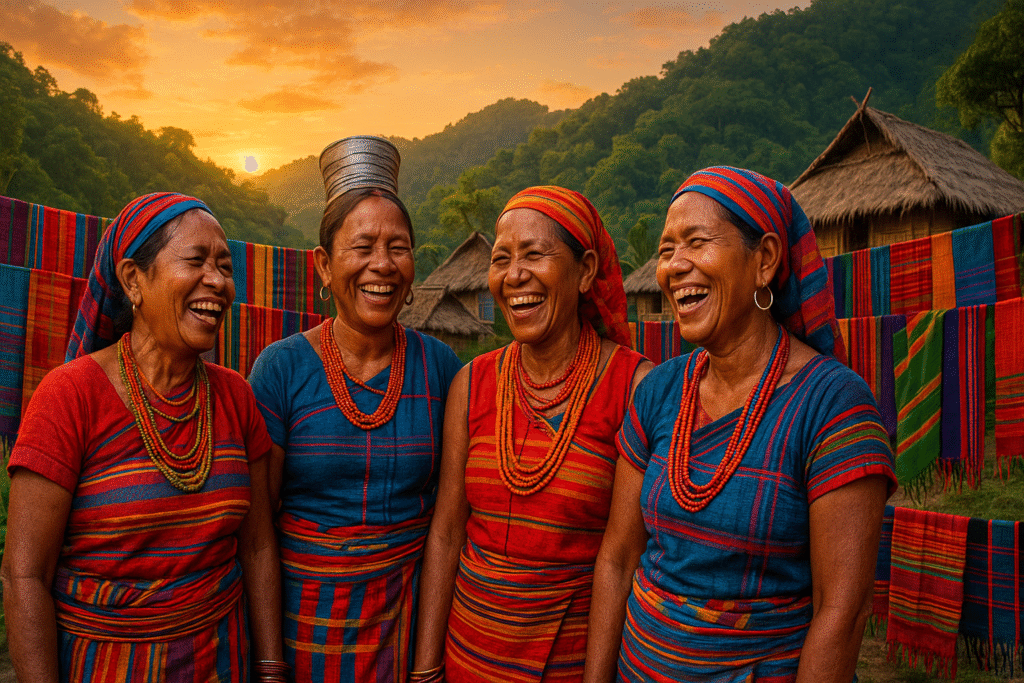A Living Mosaic of Cultures
The story of the indigenous tribes Bangladesh presents is both rich and essential. In a country of over 170 million people, the tribal communities represent a small but vital part of the national identity. According to the 2022 census, the indigenous population is approximately 1.6 million, representing about 1 percent of the total population. (UPR info)
Yet many community members and researchers believe this number is under-reported. (The Daily Star)
The term “indigenous tribes Bangladesh” covers dozens of distinct groups, each with their own language, culture and history.
Where They Live and Who They Are
Most of the tribes are concentrated in the southeastern region known as the Chittagong Hill Tracts (CHT), encompassing the districts of Rangamati Hill District, Khagrachhari District and Bandarban District. (Wikipedia)
Beyond the hills, many indigenous peoples live in the plains and tea‐garden regions. (The Asia Foundation)
Some of the major groups include the Chakma, the largest, the Marma, the Garo, the Tripura and the Santals.
For example, within the CHT the Chakmas form about 42.67 percent of the Rangamati district’s population, while Marma and Tripuri form other significant portions.
On the plains, some groups face challenges of recognition and visibility. For instance, a survey found 79.5 percent of older indigenous adults in tea gardens had chronic diseases, and 94 percent experienced delays in receiving treatment. (PMC)
Cultural Practices and Traditions
The indigenous tribes Bangladesh hosts maintain deep traditions that differ much from the majority Bengali culture. Many practise shifting cultivation (locally called jhum) in the hill areas, weaving, handicrafts, oral storytelling and distinctive festivals. (World Bank)
Language diversity is striking. Bangladesh has at least 35 indigenous languages spoken among tribes. (researchportalplus.anu.edu.au)
Festivals such as the Garo’s Wangala harvest festival, or the Chakma’s Biju New Year celebrations, reflect vibrant communal life. In weaving, many communities create handloom textiles unique to their region. These traditions hold immense cultural value, but many are under pressure from assimilation, economic change and land‐use shifts.
Challenges and Pressures Facing the Communities
While the heritage of indigenous tribes Bangladesh supports is remarkable, the reality of their daily lives often involves serious challenges. Their lands are often vulnerable to encroachment or dispute. According to a rights factsheet, indigenous peoples lack explicit constitutional recognition and face threats including land grabbing, violence and inadequate protection of their distinct languages and cultures. (UPR info)
Educational attainment and health outcomes are often lower. For example the study of older adults in indigenous communities revealed poverty and low awareness as major causes of poor health.
Demographically, the 2022 census shows the indigenous population apparently dropped in the hill tracts from 920,217 in 2011 to 852,540 in 2022, raising concerns of under‐enumeration or other issues. (The Daily Star)
Key Regional Insights
Hill Region (Chittagong Hill Tracts)
The CHT region remains the most concentrated area of tribal populations. Here the tribal communities share the landscape with settlers and face unique land, identity and governance issues. The region hosts a diverse mix of ethnic groups, including smaller ones such as the Khumi, Khyang and Pankho.
Plainlands and Tea Garden Areas
Beyond the hills, tribes in the plainland districts and tea estates confront different dynamics. They often live in more dispersed clusters, face economic marginalisation and limited infrastructure access. A report noted that although many tribal people live in the plains, official recognition and data remain weak. (minorityrights.org)
Why Their Story Matters
Understanding indigenous tribes Bangladesh houses is more than cultural curiosity. It is about recognising the rights, voices and identities of communities that contribute to the nation’s diversity. Their knowledge of forest ecosystems, local crafts, language heritage and rural resilience are assets.
From an equity perspective their inclusion and visibility matter. When they are under‐recognized, these communities can slip into deeper marginalisation. Government policies and civil society efforts that focus on indigenous inclusion often stress land rights, language preservation, health access and education. (UPR info)
Encouraging Developments and Future Directions
There are promising signs. Research efforts are increasingly focusing on indigenous languages, such as a machine translation project addressing the Chakma language. (arXiv)
Awareness of access issues is rising. For instance, older adults in tribal communities are being studied to inform targeted health support.
Advocacy for constitutional recognition, better census methods and stronger rights for indigenous peoples continues to grow. (The Daily Star)
For the future of indigenous tribes Bangladesh wide, key directions include strengthening land rights through fair dispute resolution, ensuring education in native languages, protecting culture and languages from erosion, improving health and economic opportunities and building inclusive policy frameworks.
Practical Ways to Support Indigenous Communities
If your interest in indigenous tribes Bangladesh extends to practical engagement, consider the following approaches:
- Support organisations that work with indigenous communities on education, health or land rights.
- Promote cultural tourism that respects tribal traditions and safeguards community control of the tourism model.
- Advocate for inclusive policy at national and local level that recognises indigenous identities and addresses marginalisation.
- Encourage documentation and revitalisation of indigenous languages and crafts.
Final Reflections: Celebrating and Protecting Diversity
The narrative of indigenous tribes Bangladesh shelters is one of heritage and hope. These communities carry forward languages, customs and ecological knowledge. They also face profound challenges. By recognising them fully and supporting their rights and dignity, we enrich national life. The story of the indigenous tribes Bangladesh hosts invites all of us to listen, learn and stand in solidarity.
